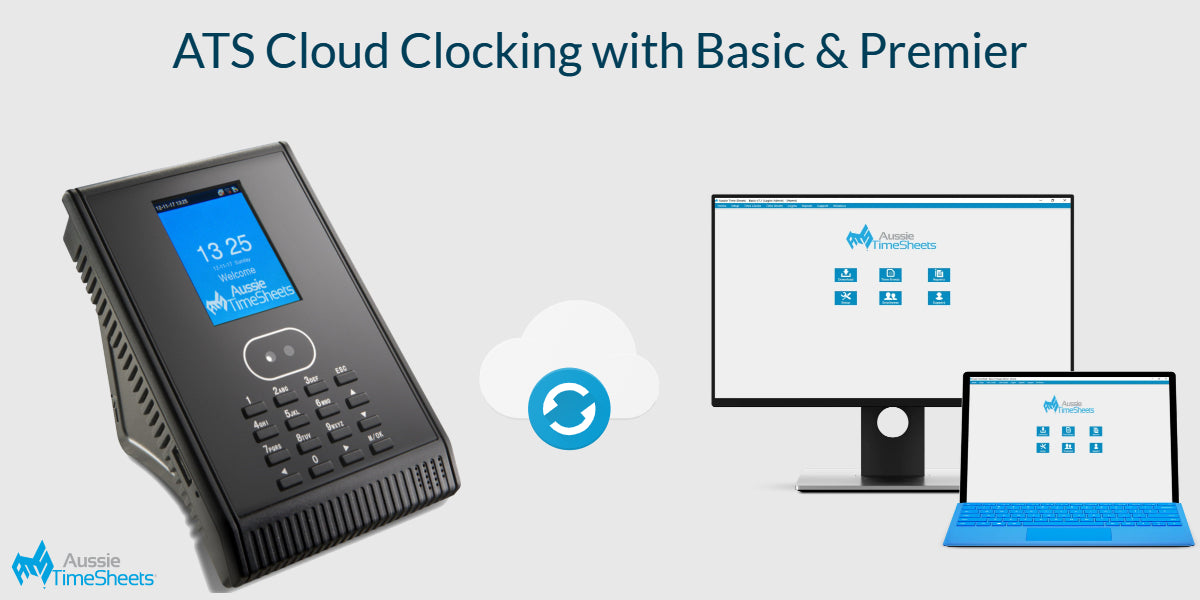We'd love to hear from you!
Please complete our online enquiry form here and our friendly sales team will assist you:

One of the most commonly asked questions here at Aussie Time Sheets would be “How reliable are your fingerprint scanners?” This is a very reasonable question as first and foremost our systems are designed to save you time and we have all experienced delays trying to log into our smartphones with lunchtimes BBQ sauce on our fingertips. However, there are many different types of fingerprint scanners available to the domestic market and some of these scanners are far more reliable than others.
 The most common type of fingerprint scanner used today is the “capacitive touch” sensor type, these types of sensors are found in smartphones, laptops and accessory devices. This technology works by applying the fingerprint directly onto the sensor, the device can then read sub-epidermal skin layers. The sensor passes a small current through one's finger to create a "fingerprint map" of the user's dermis. This method means that should something impede the current such as moisture, dirt or this mornings pastry leftovers, the map is incomplete and unable to identify the user. Many users often experience difficulty using these types of scanners and become easily frustrated when attempting to log into their devices after multiple unsuccessful login attempts.
The most common type of fingerprint scanner used today is the “capacitive touch” sensor type, these types of sensors are found in smartphones, laptops and accessory devices. This technology works by applying the fingerprint directly onto the sensor, the device can then read sub-epidermal skin layers. The sensor passes a small current through one's finger to create a "fingerprint map" of the user's dermis. This method means that should something impede the current such as moisture, dirt or this mornings pastry leftovers, the map is incomplete and unable to identify the user. Many users often experience difficulty using these types of scanners and become easily frustrated when attempting to log into their devices after multiple unsuccessful login attempts.
 Another type of fingerprint scanning is the use of “Optical Image Capture” technology, this type of scanner is considered the gold standard for capturing high quality fingerprint images often used by governments and other mission-critical applications. The capture device analyses the fingerprint image to determine the location of the fingerprint core, the pattern type (i.e., right loop, let arch, etc.), estimates the quality of the ridgelines and extracts the point in which the ridges split, intersect or end. The internal computer compares this image to the template stored in real time to confirm the identity of the user. This means that a user’s fingerprint can be partially covered by dirt, paint or moisture when scanning to authenticate as the image capture device may only need to examine a small area of the fingerprint to achieve a unique measurement and authenticate the user. Note: Domestic fingerprint scanners will store a hard copy image of your fingerprint.
Another type of fingerprint scanning is the use of “Optical Image Capture” technology, this type of scanner is considered the gold standard for capturing high quality fingerprint images often used by governments and other mission-critical applications. The capture device analyses the fingerprint image to determine the location of the fingerprint core, the pattern type (i.e., right loop, let arch, etc.), estimates the quality of the ridgelines and extracts the point in which the ridges split, intersect or end. The internal computer compares this image to the template stored in real time to confirm the identity of the user. This means that a user’s fingerprint can be partially covered by dirt, paint or moisture when scanning to authenticate as the image capture device may only need to examine a small area of the fingerprint to achieve a unique measurement and authenticate the user. Note: Domestic fingerprint scanners will store a hard copy image of your fingerprint.
In summary, there is a very large quality gap between capacitive touch technology and optical image capture, to say apples and oranges don’t do it justice. Most devices won't feature image capture due to the high price tag that is associated with the technology, it is far more cost effective to have capacitive touch technology when working on a large scale. Aussie Time Sheets offers top of the line Optical Image Capture with the ATS-Fingerprint to ensure your employees can sign on and off quickly and easy any time of the day no matter what industry you work in. Inquire today and see how our software can revolutionise the way you manage time and attendance.
Don't miss out on the opportunity to save on Time Clocks with discounts ranging from 10% to 35% based on the quantity purchased. Act fast as the offer is limited to online purchases only.
Aussie Time Sheets Basis & Premier now have an excellent new feature, Cloud Clocking! You can now easily sync all your time clocks to your software from anywhere in Australia. Employees can clock from remote sites with all the times syncing back to your software.


